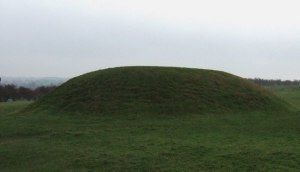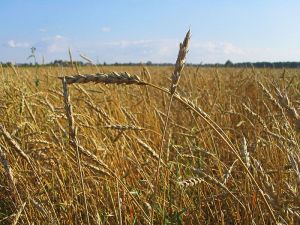The Celtic festival of Lugnasadh (pronounced loonasa) falls on the 1st of August and is believed to have been a celebration of the harvest. The Celtic calendar had two principal festivals; Samhain (in November) and Bealtaine (in May). Separating these two main festivals were two lesser celebrations, Imbolg (in February) and Lugnasad (in August).
The origins of the Lughnasa festival are tied in with traditions surrounding the Celtic god Lug, from whom the festival gets its name. Lug was a significant deity in the Celtic world and his name is linked to place names such as Lyon (Lugdunum), Katwijk near Leiden (Lugdunum Batavorum) and the modern Galician city of Lugo (Lucus Augusti). In Ireland he has numerous titles, two of the more common ones are Lugh Lamhfhada (Lugh of the Long Arm) and Lugh Samhildanach (Lugh the skillfull). The reference to the ‘long arm’ relates to his ability with a magical spear rather than the length of his limb. The name Lug also has solar connotations and he is likely to have been a sun god. Lugh was king of the Tuatha Dé Danann(Tribe of the goddess Danu).
Legend has it that the feast of Lughnasa was established by Lug to commemorate his foster mother Tailtiu (the nature goddess) who died of exhaustion after clearing the forests of Ireland to facilitate cultivation. An important centre for celebrations of this festival was Teltown in County Meath which may have derived its name from the goddess. It is likely that this festival involved a large tribal gathering involving feasting, trade and games. The gathering at Teltown or óenach Tailten was presided over by the King of Tara and a tradition of this festival survived locally into the 19thcentury.
An earlier name for the harvest festival also survives. This was referred to as Brón Trograin or the Rage of Trograin and was an occasion for sacrifices to ensure the ripening of crops. It is likely that Trograin was an earlier tribal god who was replaced by Lug.















